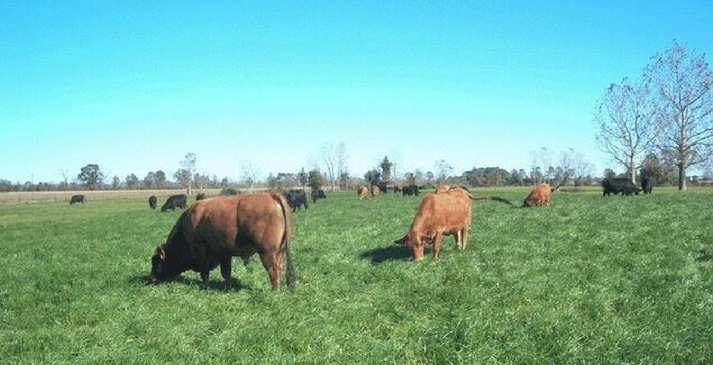
Any successful Southern cattleman knows that their real business isn’t cattle; it’s growing grass and then converting that grass into beef. Knowing that better forages make better profits for beef producers, all of us at Ragan and Massey go to great lengths to bring the best forage seeds to fields and pastures. In addition to this, it’s also important to know and understand the best practices surrounding seed bed prep, planting, grazing intensity, and overseeding.
This article is the first in a series of blog posts dedicated to optimizing winter forages, and therefore herd health and profitability. Today I’m going to answer some of the more common questions and dilemmas our pro
How much do you plant per acre?
Whether you are planting ryegrass or our forage oats the answer to this question depends on what you want to accomplish. Most producers have their own preferences and pretty much plant the same rates year after year.
On Prine and other ryegrass varieties, we generally recommend planting 30 pounds
Achieving Adequate Coverage
A producer looking to overseeding may decide to use more than 50 pounds per acre if they are broadcasting the seed and are worried about coverage. Those choosing to drill the seed instead might find that a 25 pounds-per-acre rate is the sweet spot.
Grazing Intensity
Intense grazing will be improved with a higher plant population per acre and, therefore, a higher seeding rate will pay off. On the other hand, if you plan to take hay or only graze a few animals, then a lower seeding rate should be used as the plants will be taller at harvest and shade each other if the plant population is too high.
The same logic applies to our oats. We recommend 100 pounds of oat seed per acre if planted alone or 65 pounds of oat seed if planted with Prine ryegrass (use 20 lbs of Prine). Oats should be planted on a prepared seedbed or with a drill so that there is about one inch of soil on top of the seed. It is common practice for producers to drill 65 pounds per acre of oats in one pass over the field and then broadcast 20 pounds per acre of Prine in another pass over the field.
What do you mean when you talk about a “good seedbed”?
Ryegrass and oats are easy to grow. They grow in almost any soil, as long as it contains adequate moisture. That said, the quality of the soil is less important than its overall firmness and the depth of the planting. Ryegrass, in particular, does not do well when planted deeper than a half inch in heavy soils. Winter forages typically need 1/4” to 1/2” depth and firm soil.
To make a “good seedbed,” the trick is to make sure it’s not too soft. A well-harrowed seedbed in light soils is likely not firm enough, and rain will push seed too deep into the ground to germinate. We recommend running a culti-packer over such soils to firm up the bed. (This will help grazing efforts as well as soft seed beds are hard to graze if the weather stays wet).
A good test of soil firmness is to walk across the seed bed; if you sink in over the soles of your feet, it’s a good idea to pull something over it to firm it up.
I oversee my Bermuda grass pastures with winter forage seed. How do I keep the winter forages from holding back my spring Bermuda grass?
We get asked this a lot. Because Prine is late maturing ryegrass variety, it has higher forage quality that lasts longer than other varieties. It can create a dilemma for some producers—how do you get rid of the ryegrass so the Bermuda grass can come on in the Spring?
The simplest and most profitable solution? Graze it very hard.
As the temperatures climb in the spring well-grazed ryegrass can’t compete with the warm season Bermuda grass. If you find that your ryegrass is staying around longer than you like, simply turn more animals onto it for longer periods of time. Mother Nature will take care of the rest.
Thanks for using Ragan and Massey forage seeds. I hope you have found the above article helpful, and that you’ll stay tuned for our next blogs on the topic. If you have a question you’d like us to address, please shoot an email to [email protected]. We’re here to help.
